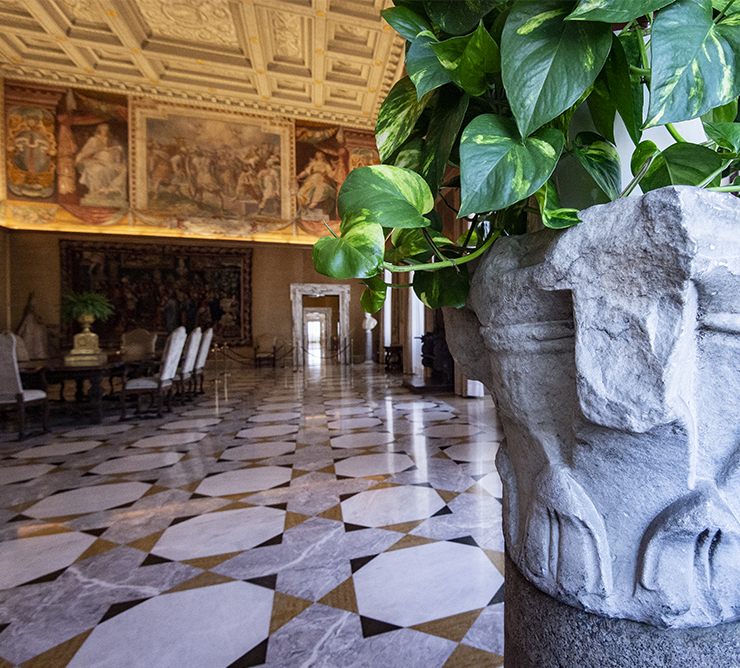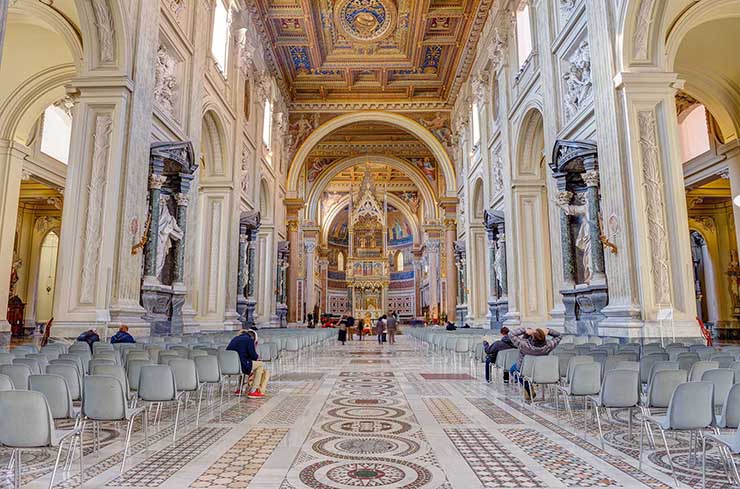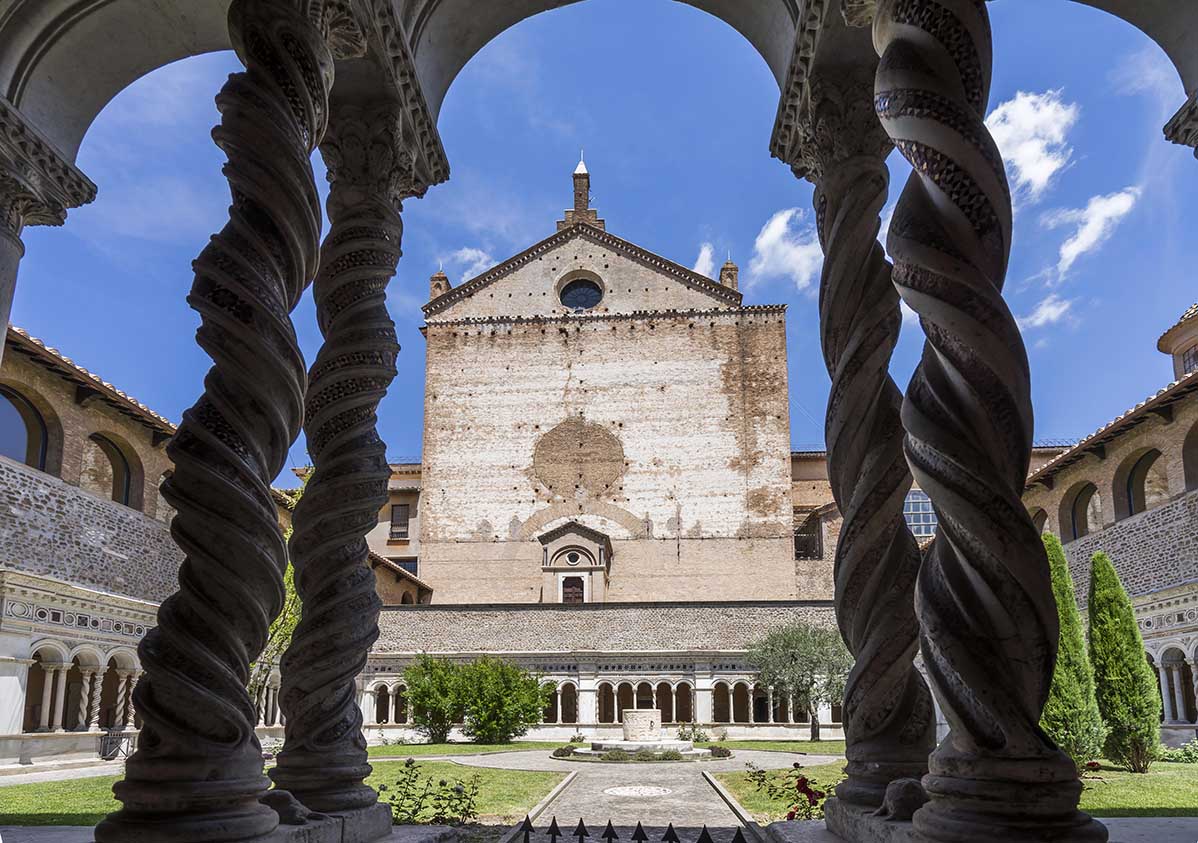Guided tour of the Lateran Palace and Saint John Lateran Basilica with its Cloister.
A visit to the Lateran Palace and Saint John Lateran Basilica with its magnificent Cloister, is essential to understand the path of Christianity and the Church of Rome. These places also preserve an historical and artistic heritage of the utmost importance for the culture of the entire world.
Accompanied by an official guide, the visit begins from the Lateran Apostolic Palace, built by Pope Sixtus V Peretti at the end of 1500 on the area of the ancient Patriarchate that during a thousand years, starting from the fourth century, was the main residence of the Popes and of the Papal Court.
Through the beautiful Staircase of the Lateran Palace we enter in the adjacent Saint John Lateran Basilica, one of the most important churches of Christianity: the first Christian church in the West built after the Edict of Constantine in 313 A.D. and therefore considered the "mother and head of all the churches of Rome and the world".
The visit ends in the Cloister, located on the left side of the basilica, a fine example of medieval Roman art: once place of prayer and meditation for the clergy of the Basilica, offers to those who visit it today, a moment of great peace and recollection.

The Lateran Apostolic Palace was built by Pope Sixtus V Peretti at the end of 1500 on the area of the ancient Patriarchate that during thousand years, starting from the fourth century, was the main residence of the Popes and the Papal Court.
A true sacred citadel built next to the Basilica dedicated to the Blessed Saviour and to Saints John the Baptist and Evangelist, today known as the Basilica of St. John Lateran. The Palace is a unique witness of the ideal of Renaissance beauty that inspired the action of a great Pontiff like Sixtus V, here and throughout Rome during his papacy.
It houses several rooms of great historical and artistic importance, frescoed with abundance of details and rich in paintings and precious tapestries, such as the Hall of Glory, the Hall of Constantine, the Hall of th Popes and the Conciliation Hall, also known for the historic event of the signing of the Lateran Pacts between the Holy See and the Kingdom of Italy in 1929.
hide
Saint John Lateran Basilica was the first Christian church in the West built after the Edict of Constantine in 313 AD, and for this reason considered "mother and head of all the churches of Rome and the world". It is, in fact, the Cathedral of Rome and see of its Bishop, the Pontiff. A masterpiece of art and architecture, transformed over the centuries by great architects such as Borromini and Galileo.
In the central nave we are welcomed by the wonderful large statues of the 12 apostles, witnesses to the apostolic succession of the Catholic Church. The beautiful Gothic canopy placed above the main altar protects two precious silver busts that guard the relics of Saints Peter and Paul. In the apse we will admire the great mosaic of Christ surrounded by Saints and Angels, masterpiece of Roman art of the thirteenth century, restored at the end of 1800. The superb apse mosaic crowns the majestic Chair that confers on the newly elected Pontiff the authority of successor of Peter and Pastor of the universal Church.
hide
Located on the left side of the Basilica, and built in the 13th century by the Vassalletto family, it is a fine example of medieval Roman art, and one of the largest cloisters in Rome. A space delimited by columns with beautiful ornamental motifs that collects in its porches ancient marble finds related to the life of the Church through the centuries. This cloister, once place of prayer and meditation for the clergy of the Basilica, offers to those who visit it today, a moment of great peace and recollection.